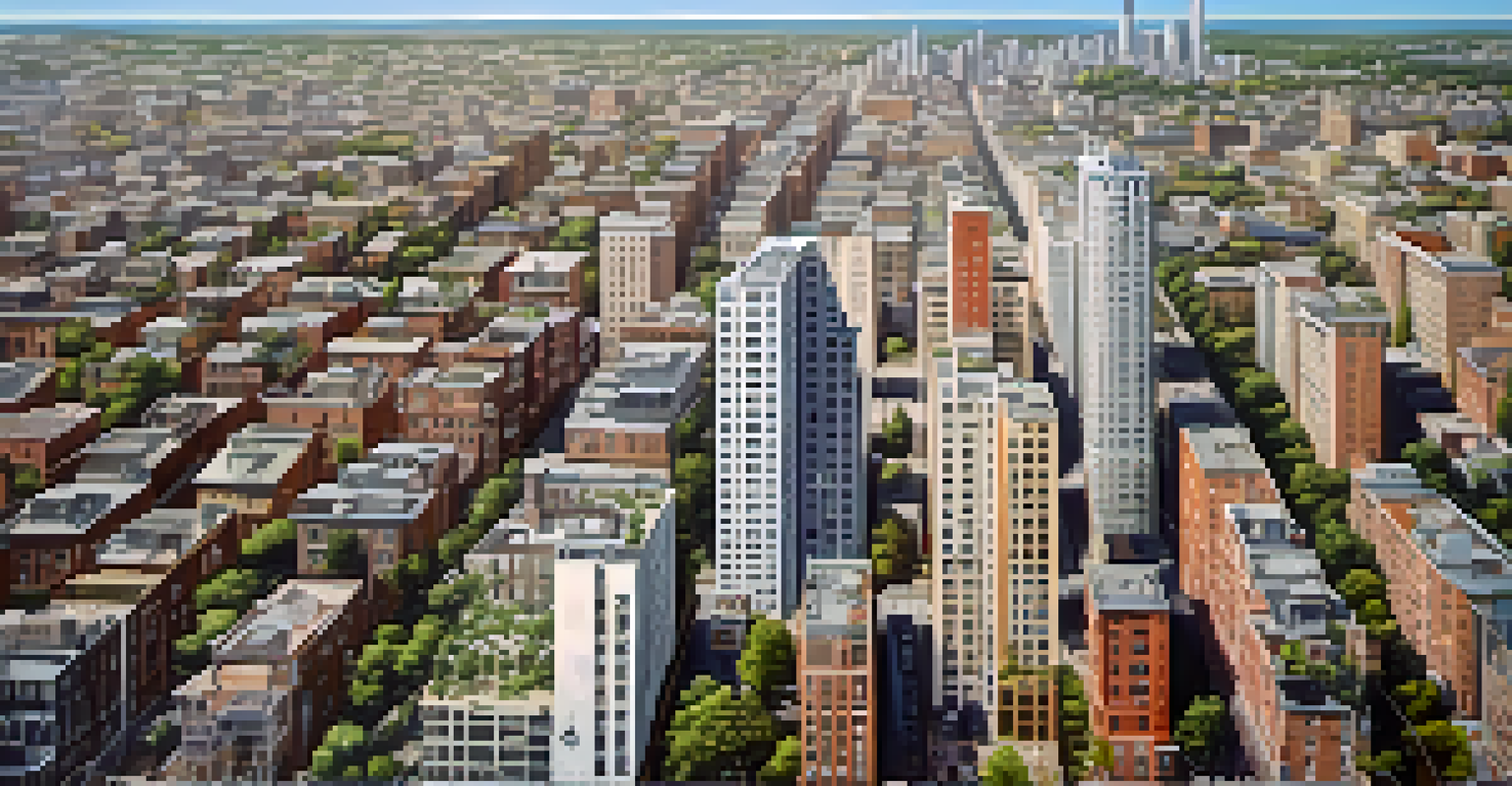Zoning Laws: Addressing Gentrification Challenges

Understanding Zoning Laws and Their Purpose
Zoning laws are regulations that dictate how land can be used in specific areas. They can cover anything from residential to commercial developments, ensuring that communities develop in a structured way. By setting these guidelines, zoning laws aim to promote public health, safety, and general welfare.
Zoning laws can either exacerbate or alleviate the challenges of gentrification, making it crucial to examine their role in community dynamics.
The purpose of these laws extends beyond mere organization; they also seek to preserve the character of neighborhoods. For instance, a zoning ordinance might restrict high-rise buildings in a quaint residential area, maintaining its charm. Understanding these laws is essential to grasp their impact on gentrification.
When gentrification occurs, it often leads to the displacement of long-time residents. Zoning laws can either exacerbate or alleviate these challenges, making it crucial to examine their role in community dynamics.
The Link Between Zoning Laws and Gentrification
Gentrification is the process where wealthier individuals move into a neighborhood, often leading to rising property values and rents. This influx can displace existing residents who can no longer afford to live there. Zoning laws play a pivotal role in this dynamic, as they can either limit or encourage such development.

For example, upzoning—changing zoning regulations to allow for higher density—can attract developers to build luxury apartments. While this might be economically beneficial, it can also push out long-standing residents. Thus, it's crucial to understand how these laws interact with the forces of gentrification.
Zoning Laws Shape Community Identity
Zoning laws regulate land use to preserve neighborhood character and promote public welfare.
Communities are often caught in a tug-of-war between development interests and the need for affordable housing. Zoning laws can be a tool for balancing these competing demands, but they must be carefully crafted.
Consequences of Poorly Designed Zoning Regulations
When zoning regulations are poorly designed, they can lead to unintended consequences. For instance, overly restrictive zoning can stifle growth, causing property values to stagnate. This can lead to a lack of investment in essential services and infrastructure, ultimately harming the community.
When communities actively participate in the planning process, their voices help guide decisions that can prevent gentrification.
Conversely, lax zoning laws can pave the way for unchecked development, resulting in a loss of affordable housing. This often forces residents out, disrupting community ties and eroding the local culture. Poorly designed regulations can thus create a cycle of displacement and neglect.
The key is to strike a balance that allows for growth while protecting the interests of existing residents. Thoughtful zoning can help create vibrant, inclusive neighborhoods rather than contributing to their decline.
Successful Zoning Strategies to Combat Gentrification
To address the challenges of gentrification, cities can adopt inclusive zoning strategies. These may include mandates for affordable housing units in new developments, ensuring that low-income families can remain in their neighborhoods. Such policies aim to create a more equitable landscape amidst rising property values.
Another effective strategy is the implementation of community land trusts. These organizations help to acquire and manage land, keeping it affordable for future generations. By taking land out of the speculative market, these trusts can stabilize neighborhoods and prevent displacement.
Gentrification and Zoning Interplay
Zoning regulations can either mitigate or exacerbate gentrification by influencing property development and affordability.
Moreover, involving community members in the zoning process fosters transparency and trust. When residents have a voice in decisions that affect their homes, they are more likely to support development that meets their needs.
Case Studies: Cities Tackling Gentrification through Zoning
Cities like San Francisco and New York have faced significant gentrification challenges, prompting them to rethink zoning laws. San Francisco's inclusionary housing policy requires developers to set aside a portion of new units as affordable. This approach aims to balance the city's booming technology sector with the needs of its diverse population.
Meanwhile, New York City has experimented with zoning for quality and affordability (ZQA), encouraging the development of affordable units in areas experiencing rapid change. These case studies highlight how proactive zoning can mitigate the adverse effects of gentrification.
Examining these cities provides valuable lessons for others facing similar challenges. The adaptability of zoning laws can help shape more equitable urban landscapes.
The Role of Community Engagement in Zoning Decisions
Community engagement is crucial in shaping zoning laws that reflect the needs of residents. When communities actively participate in the planning process, their voices help guide decisions that can prevent gentrification. Engaging residents ensures that developments align with the existing character and needs of neighborhoods.
Public meetings, surveys, and workshops can gather input from diverse community members. This feedback can help identify areas of concern, such as the need for affordable housing or green spaces. When residents are included in the conversation, the likelihood of developing effective zoning laws increases.
Community Engagement is Essential
Active participation from residents in zoning decisions helps ensure that developments meet local needs and prevent displacement.
Ultimately, community-driven zoning fosters a sense of ownership and pride among residents, making it less likely for neighborhoods to be lost to gentrification.
Future Directions for Zoning Laws and Gentrification
Looking ahead, zoning laws need to evolve to meet the challenges of changing demographics and economic conditions. As cities continue to grow, proactive measures must be taken to ensure inclusivity. This includes re-evaluating existing zoning regulations to address the unique needs of neighborhoods facing gentrification.
Innovative approaches, such as mixed-use zoning, can promote diverse communities where different income levels coexist. Encouraging a blend of residential, commercial, and public spaces can enhance community cohesion and reduce displacement risk.

In conclusion, zoning laws are a powerful tool in addressing gentrification challenges. By prioritizing community needs and involvement, cities can create lasting solutions that foster equitable growth.